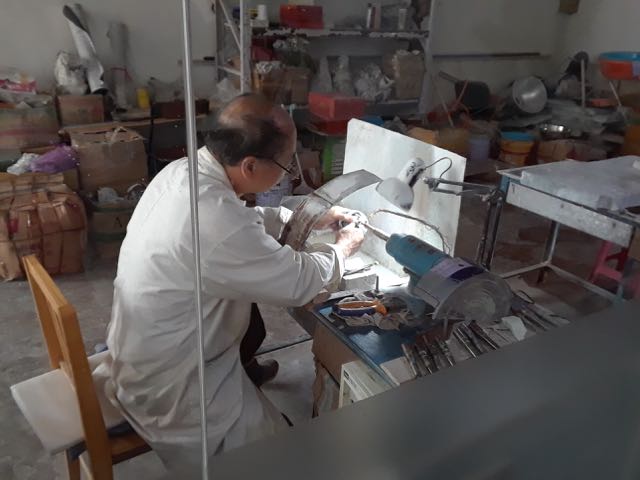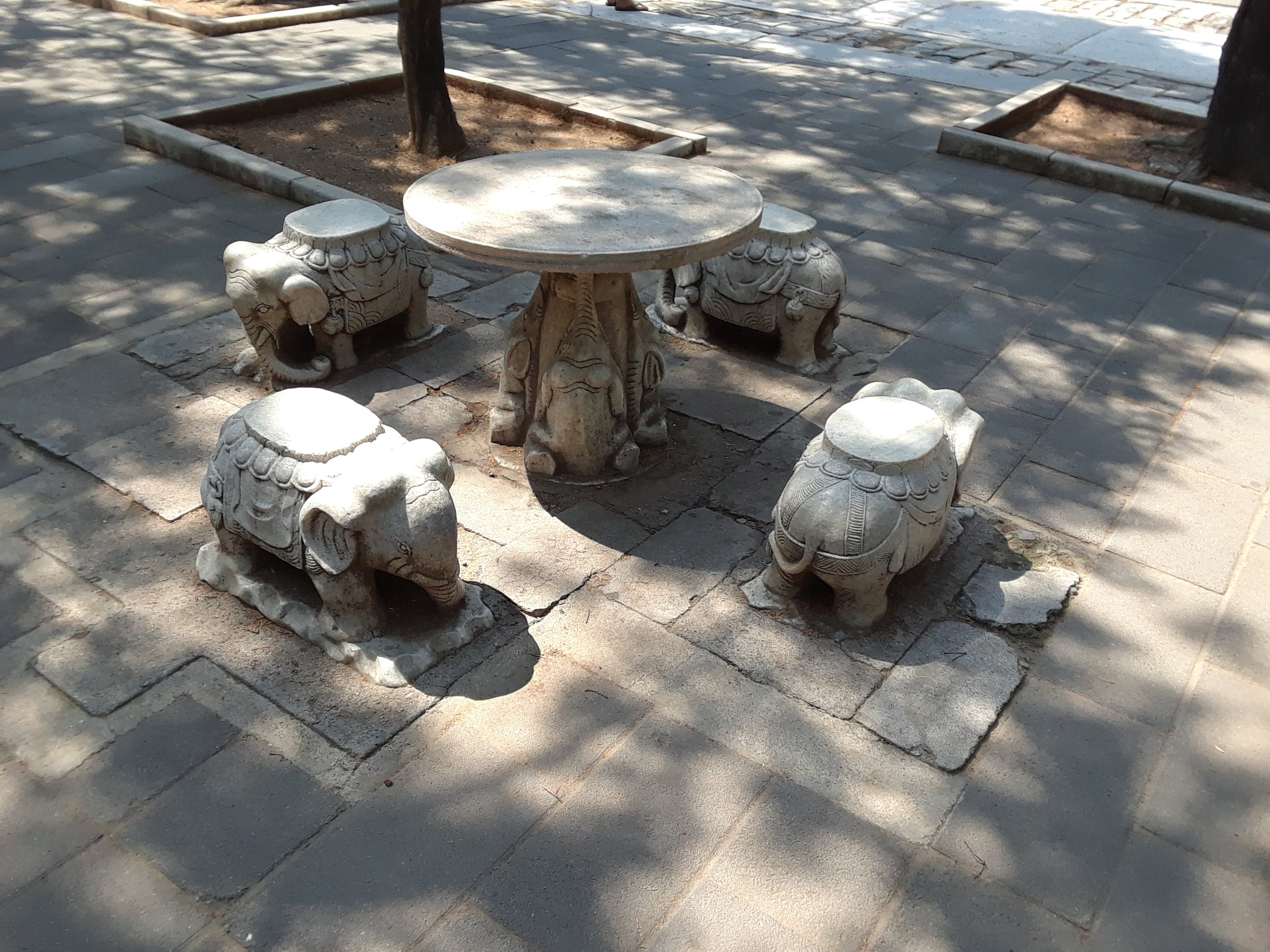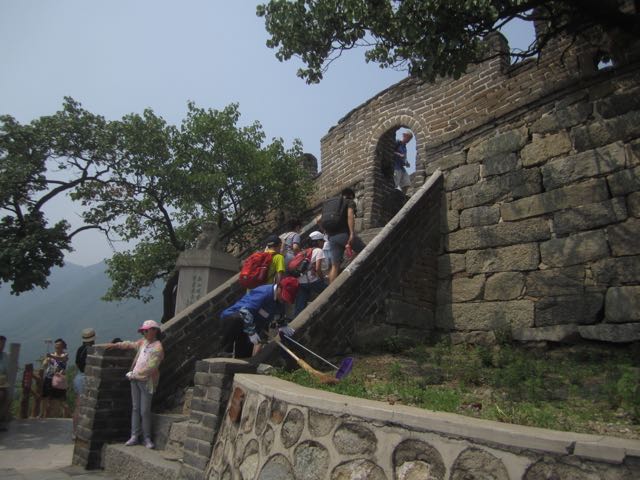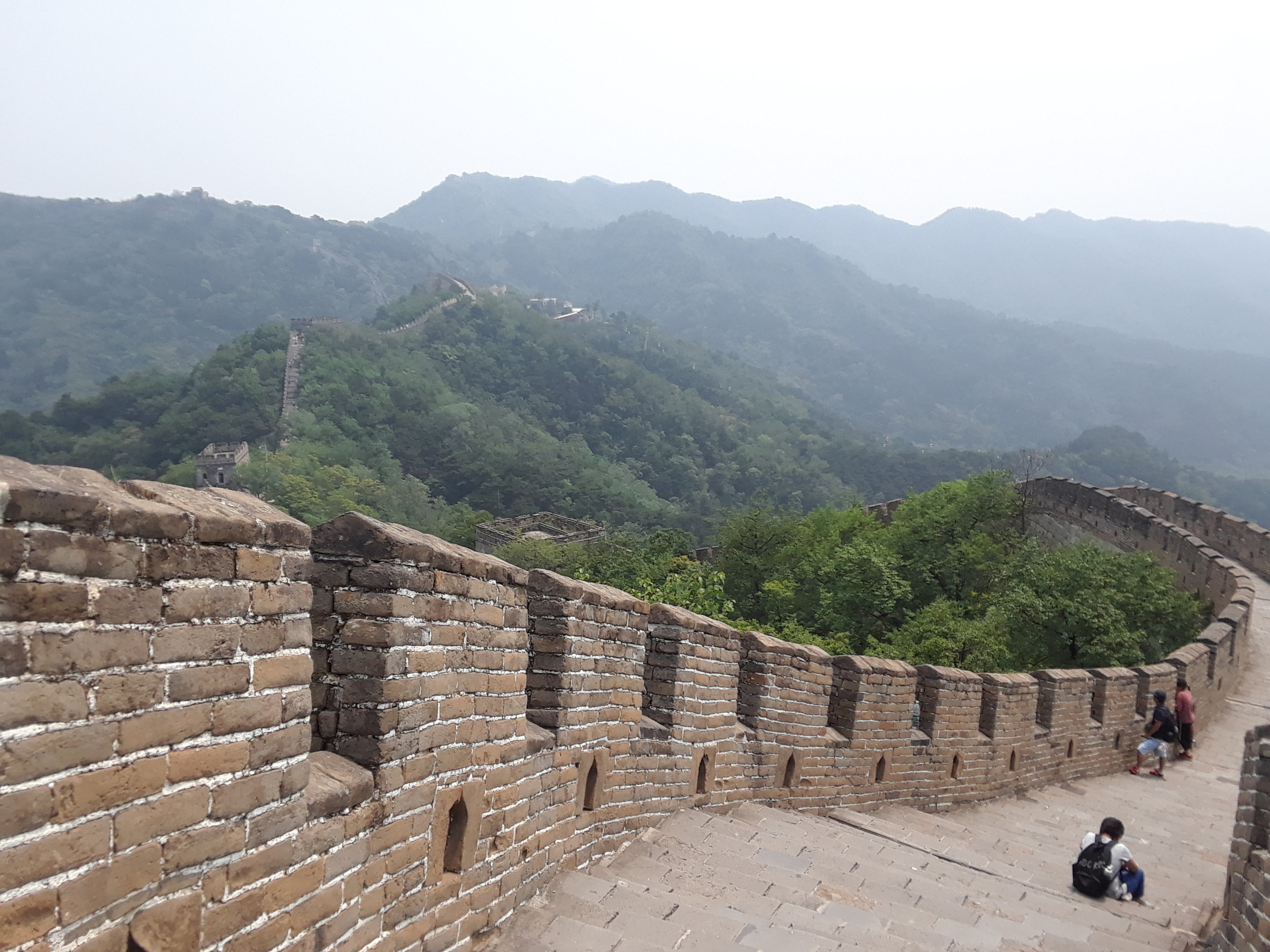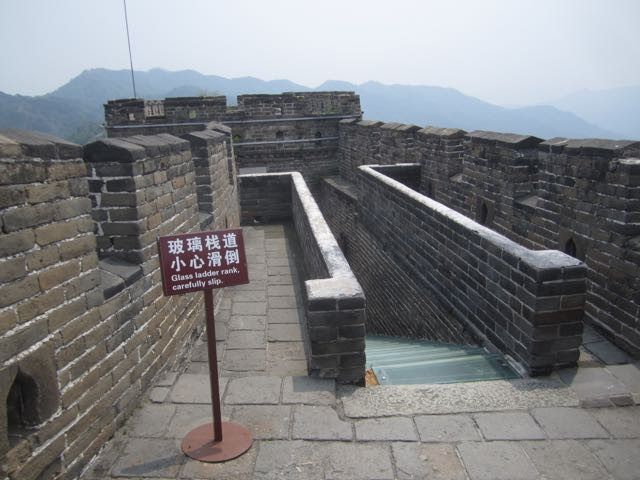Beijing day 3: The Great Wall, family-style
I meant to send this much closer to the events described, but didn't get around to finishing this email before my return from China. Here's a bit about the day we spent at the Great Wall.
Thursday, June 29, we rose around 5 a.m. to get ready for our 6:30 a.m. pick-up at a nearby hotel. By the time we headed out of the city, our party had grown to nine, plus the driver and our English-speaking guide, Emily. As Dad began befriending them all, we became a cheerful party.
Our homestay host had warned us the tour package included a couple stops meant to get our business in souvenir sales. "No buy ANYthing," she said repeatedly. At the first stop, a jade factory, we took some pictures of the men working and nodded politely in the large showroom (no photos allowed, even of the large jade reproduction of a shipping vessel). Dad mostly used the time to build his acquaintance with tour group member Satish, an American businessman from Houston.
Once back on the road, we continued until the Dingling tomb, burial site of the Ming emperor Zhu Yijun (1563-1620). From the parking lot, we crossed a long plaza lined by covered stalls along the left side. In a few of them, vendors hawked piles of overpriced peaches or cherries, while others sold drinks, snacks and sun hats like the one I bought.
Up a few wide stairs, we crossed another plaza next to a ticket booth, then walked single file through a turnstile leading into the main site. A little further on, we crossed the remains of a once-covered temple or hall. At even intervals, the last inch or two of the former columns supporting the roof made a rectangular pattern of raised circles you had to watch that you didn't trip on.
Just beyond this, we came to a richly decorated arch that served as a gate of sorts to a large courtyard filled with scraggly pines, interspersed with small, low tables and little seats with carved elephants at the base. I'm still not sure if these were recent additions or dated to the time of the razed columns.
Up a few more steps and around a multi-story, open-sided structure of some kind (somewhat like a tower), we reached a forested area. As we followed a curving path leading to the main site -- the underground palace with tombs -- our guide told us that the green and yellow tags on the evergreens showed their age, one indicating 300-year-old trees, one 500-year-old.
We walked briefly through the underground tombs, where people had left lots of money by several mausoleums. Although the marble offered a respite from the heat outside, that space didn't interest me like the sprawling grounds above did.
Back on the bus again, we continued to the Great Wall's Mutianyu section, which locals apparently visit much more frequently than the crowded Badaling section most tourists and foreign dignitaries go to. A few miles away from our exit, we began to a narrow, light-brown band across parts of the green hills in the distance: the wall itself.
One of the Great Wall's many towers.
Once we pulled off the highway and into a large, dusty parking lot full of other tour buses, our guide led us not to the entry, but to the nearby restaurant, where they had a large lunch waiting for us. Now on friendly terms, the group sat around a large round table with a big lazy susan in the middle, its sides lined with simple plates containing nearly a dozen different dishes.
Well satisfied, we filed back outside into the midday heat, collected our tickets and headed up the first set of many stairs to take the cable car up to the tower 14.
Not everyone took the stairs.
We could have also walked to a lower portion, but since we only had two hours to explore Mutianyu before our bus started back to Beijing, it seemed wise to spend the extra money on the cable car and maximize our time at the top.
A cable car holds about four people. The ride takes 15 minutes or less.
When we reached the top, we had a choice between going uphill toward the left and taking a more descending route toward the right. I assumed the mountains on the other side of the wall were toward the north, while the valley we'd come from was the south, but for all I know, the valley was to the west, the mountains east.
At any rate, we spent 45-60 minutes on top, walking up and down the many stairs between the frequently spaced guard towers. (The mother and her two school-aged children in our group tried to keep count of all the stairs, but I can't remember their final number.) Apparently Mutianyu has much more closely spaced guard towers than other sections, so I got all the way to tower 10 and back in the time we had. If I ever go back, it would be nice to have more and provisions for a longer hike, though I certainly needed the near-gallon of water I'd packed with me for the day.
Back on the bus by mid-afternoon, we made one final stop for a sales pitch masked as Chinese tea ceremony. We did try to several interesting kinds of tea (including a rich, juice-like beverage made with dried fruit), but managed to heed our homestay host's warning about not buying anything.
